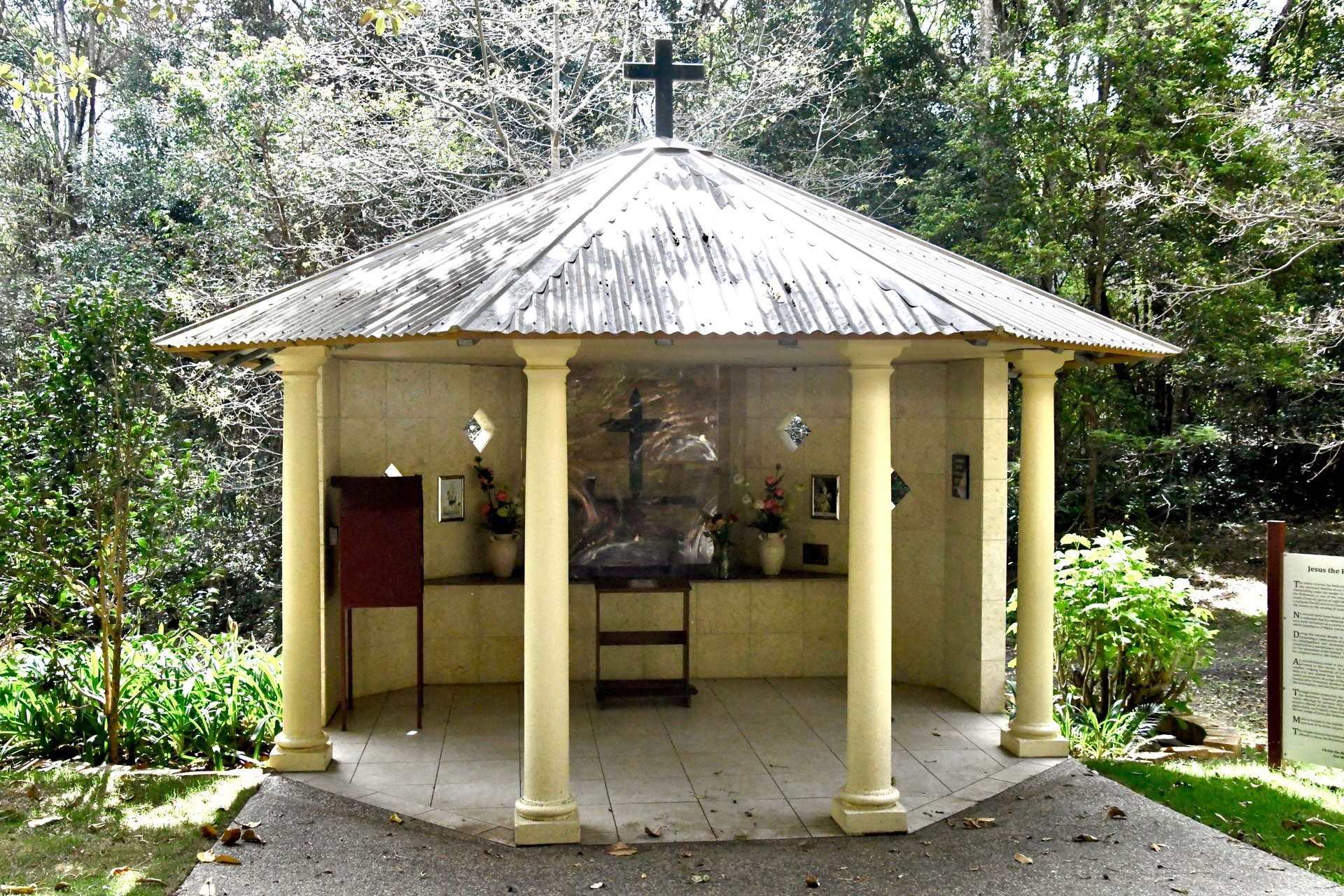The Maltese community built the Shine of Jesus the Redeemer in memory of the devotions offered to Jesus the Redeemer at Senglea, Malta.
Ir-Redentur
The statue of Jesus the Redeemer, venerated in the Oratory of the Holy Cross, which is annexed to the Sanctuary Basilica of our Lady of Victories at Senglea, Malta, is a life-sized effigy representing Christ falling under the weight of the Cross on His way to Calvary, without any doubt, the shrine with the statue of Jesus the Redeemer, is one of the oldest and most frequented of all national sanctuaries in Malta. This statue is, in reality, one of a group of eight life-sized statues (representing various stations in the Passion of Our Lord Jesus Christ) which are found in the town of Senglea and which are carried in procession around the streets of the town of Senglea on the evening of Good Friday.
No records have been found about the origins of the statue of Jesus the Redeemer, and its maker is unknown. It surely dates back to at least the early years of the eighteenth century. However, its very early attraction as a centre of devotion, initially for the inhabitants of Senglea and subsequently for the whole population of Malta, can be traced back to the very early years of its existence.
During the second decade of the eighteenth century, the Confraternity of the Holy Cross proposed constructing an oratory to be annexed to the parish church, where it could hold its congregations and devotions. From the very beginning, it was planned to include a special place as a niche where the statue of Jesus the Redeemer could be exposed for the veneration of the faithful. Thus, in 1727, the oratory was blessed and dedicated to religious service, and the statue of Jesus the Redeemer instantly found a rightful place therein.
An extraordinary event in the history of the city of Senglea contributed to promoting further devotion to this shrine. In the year 1813, a deadly pestilence spread throughout Malta like wildfire, reaping hundreds of victims every week. The Chapter of Senglea vowed solemnly that if their city were spared from this tremendous affliction, they would perpetually hold three annual votive processions as a sign of thanksgiving; one with the statue of Jesus the Redeemer the third Sunday after Pentecost, another with the statue of Saint Roque on the Sunday following the feast of the Assumption, and the third with the statue of Our Lady of Victories on the 8th of September.
Through divine protection, the city of Senglea was spared. Consequently, the devotion to Jesus the Redeemer acquired greater significance and importance, as witnessed by the numerous votive offerings by persons who have been healed from physical or spiritual illnesses through the prayers offered at this shrine and the endless stream of believers who every day of the week (and particularly on Fridays) come from all parts of Malta and Gozo to pray and render thanks before the devout image of Jesus the Redeemer.

